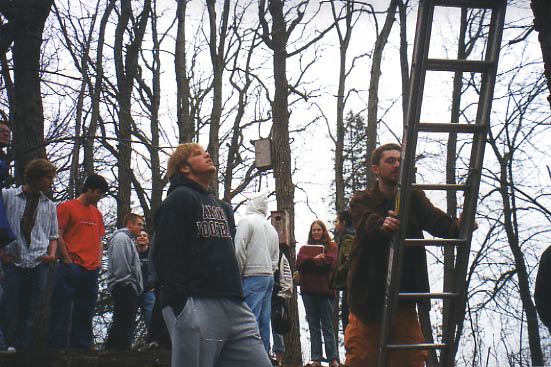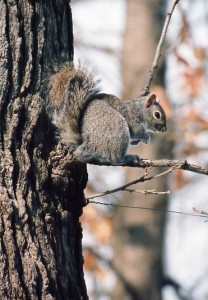Wildlife
Even within the seven-county metropolitan area, wildlife is more diverse and numerous than most people realize. The ANP has a wide variety of wildlife seen on a regular basis, large and small.. (Special thanks to Anoka resident and ANP-member Gordy Wilkinson for sharp eyes and handy camera!) If you’re lucky, you might get to see some of the sandhill cranes that visit the open fields and hills..
In 2011, there were over 100 little bluebirds fledged in the houses around the ANP and the city of Anoka. In 2012, we’ve documented at least 70 (as of June 15), and the houses are still busy.. some with their second set of eggs. 2012 was a very good year!
The central trail running north-south between the main woods and the western meadow is referred to as the “Vern Emmans Bluebird Trail,” in recoginition of his lifelong work and interest in Minnesota’s special songbirds. Observant visitors to the park will notice many species of birds and also the birdhouses maintained by volunteers. In the Fall of 2010, volunteers from the Friends of the ANP completed a survey and maintenance program on all the bluebird houses active in the Anoka city area, including the ANP, Forest Hill Cemetery, Anoka High School, and the Anoka Regional Treatment Center. All houses were removed and then repaired, painted, and mounted on ‘predator-resistant’ steel poles (the former poles were much easier for predators to climb). Bluebird houses are checked, data is recorded, and they’re maintained regularly over the spring, summer, and fall. If you’d like to get involved with this, contact the Friends of the ANP. It’s fun!
Deer are often seen in the Anoka Nature Preserve, especially along the wooded breaks along the meadow east of the riverbank. Here, two does and a buck stop for a drink on a sandbar.. The ANP oak savanna is prime deer habitat, offering both shelter and feeding grounds. Outdoor Adventure classes, part of the Anoka High School science program, have installed and maintained many of these houses in the ANP. Former science staff member and naturalist Lyle Bradley of Andover, is an outstanding resource for students learning about wood duck habitat. 
Wood duck populations have rebounded dramatically, thanks to the many concerned naturalists and sportsmen who have constructed and maintained wood duck houses in prime habitat areas.
The female wood duck is taking full advantage of the houses provided and maintained by AHS students.. this is one of the reasons the wood duck has managed such a significant rebound in numbers over recent years.
Wood duck houses need to be cleaned and prepared for the nesting season by removing soiled or contaminated nesting material and new wood shavings or chips placed into the box. Here Anoka High science students maintain the wood duck houses early in the spring before active nesting begins..
Mallards are the most common waterfowl along the wetlands and riverbank of the Rum River, often nesting along grassy banks and areas of cattails in the backwater areas of the park.
A mating pair of Canada geese will be raising goslings in May, and can often be seen swimming with their young upstream early in the morning. Several pairs are nesting in the backwaters along the northwest corner of the park, one pair seen recently swimming with ten goslings in a line.. it resembles a fieldtrip with a kindergarten class and two teachers!
Life in the wild is all about predator/prey relationships, and the ANP has its share of drama– redtailed hawks and other raptors and accipiters are frequently seen above the water and woodland areas: redtails, Cooper’s hawks, kestrels (sparrow hawk), and American bald eagles are often spotted.
Not all predators fly.. mink frequent the riverbank areas, traveling along the shore checking wood duck houses, feeders, other birdhouses, and anywhere else he can find a meal. You’ll be lucky to spot him– elusive and relatively rare, they were prized for fur when Minnesota was young and the river was simply the trading highway.
Competition for food takes unusual forms. Red squirrels, smaller and more aggressive than their gray counterparts, will raid feeders for whatever they can find. Pileated woodpeckers (the largest species of woodpecker native to Minnesota) don’t usually prefer suet feeders, but may visit occasionally for a treat.

The trails within the Nature Preserve wind through the wooded sections, and also run along the wetland areas on the west side of the park. The ANP is a “people-powered” park– meaning that activity is non-motorized, including walking, running, birding, crosscountry skiing, biking, canoeing…
For additional information about bird habitat and species frequenting or ‘transients’ visiting the RRNA, check with the MN Ornithologists Union.
If you’ve got digital pictures from the Anoka Nature Preserve from a recent visit, send them along!
No Comments »
RSS feed for comments on this post. TrackBack URL
